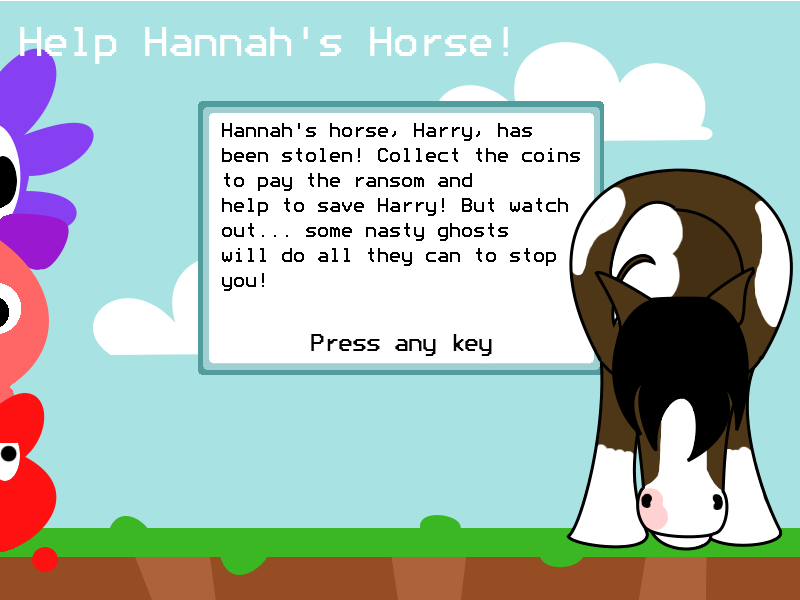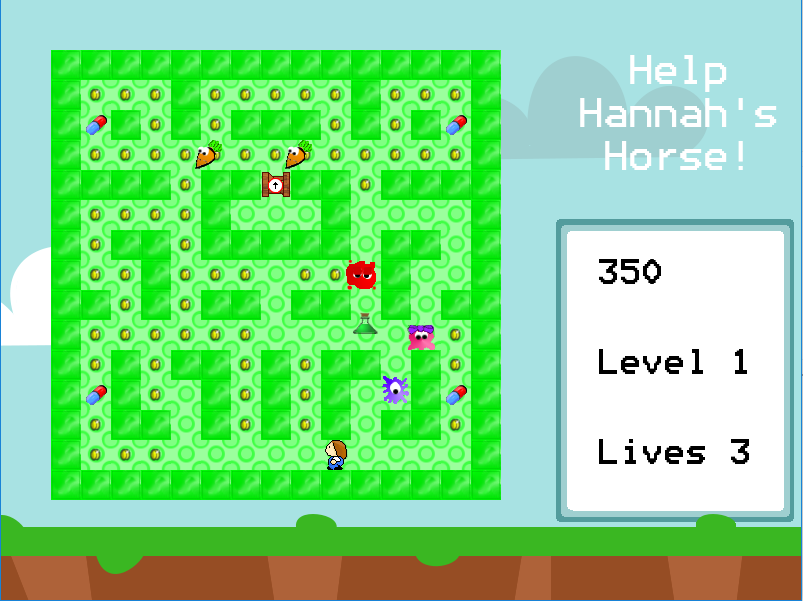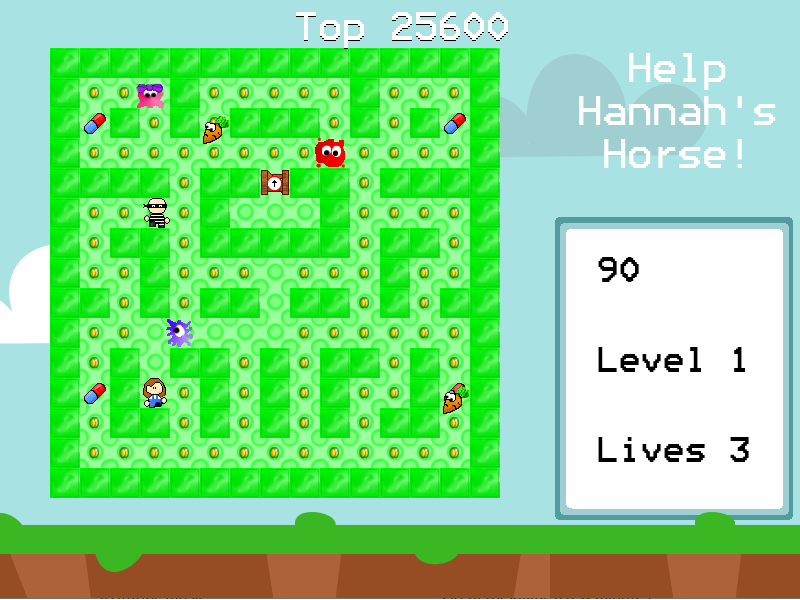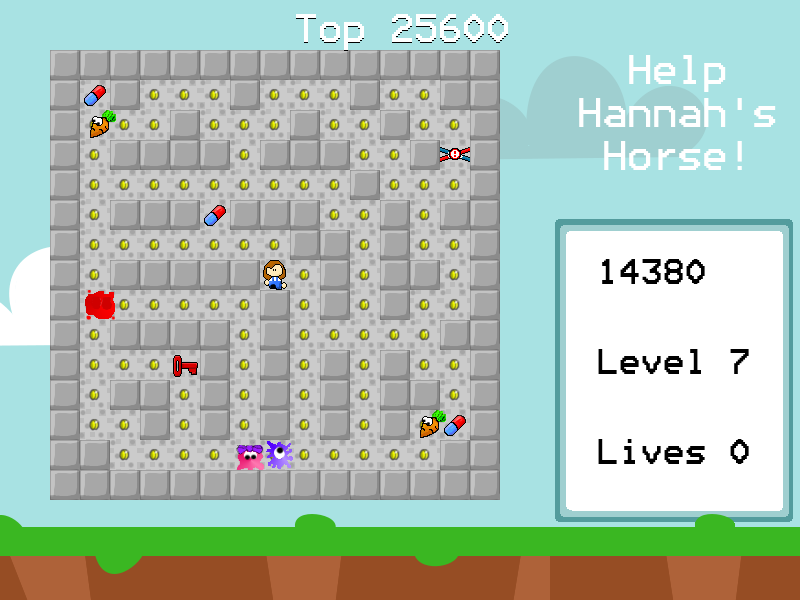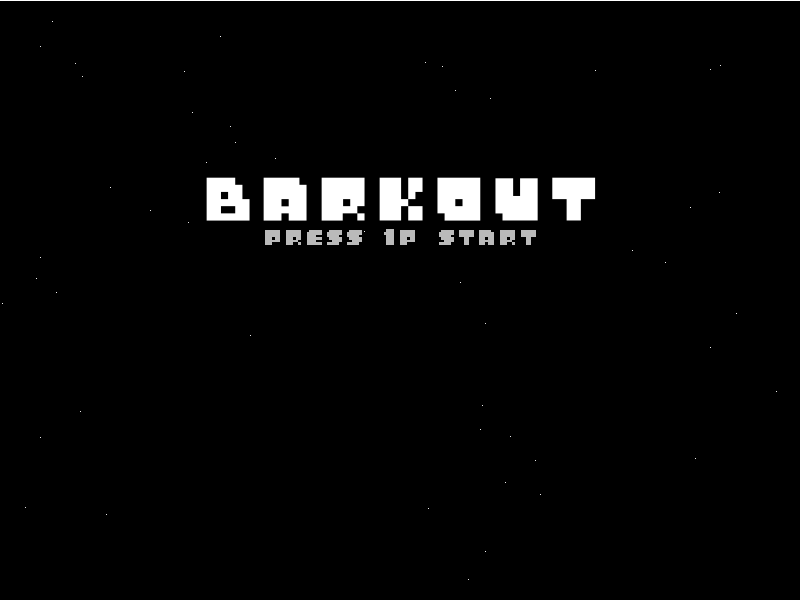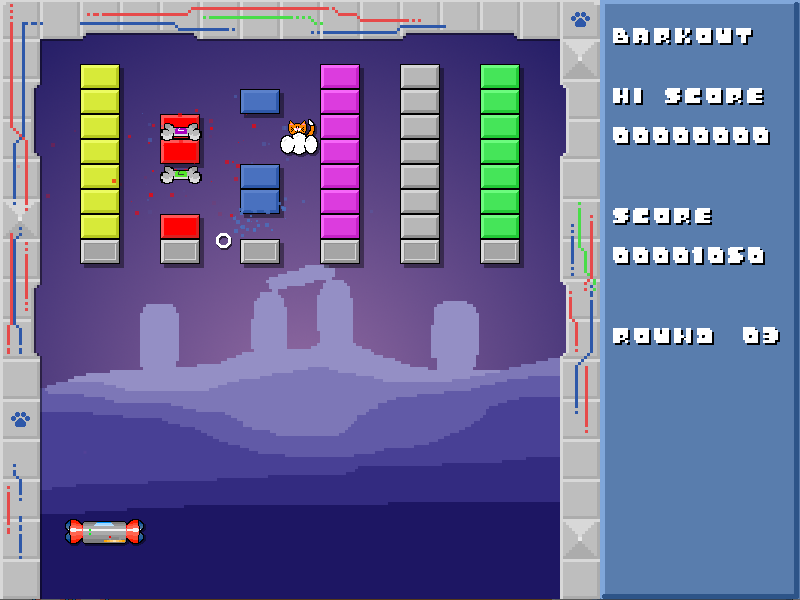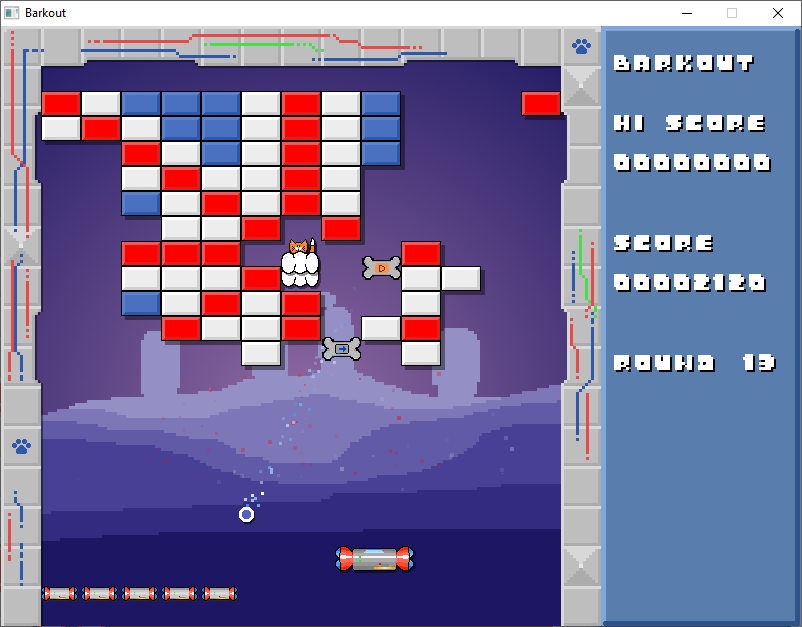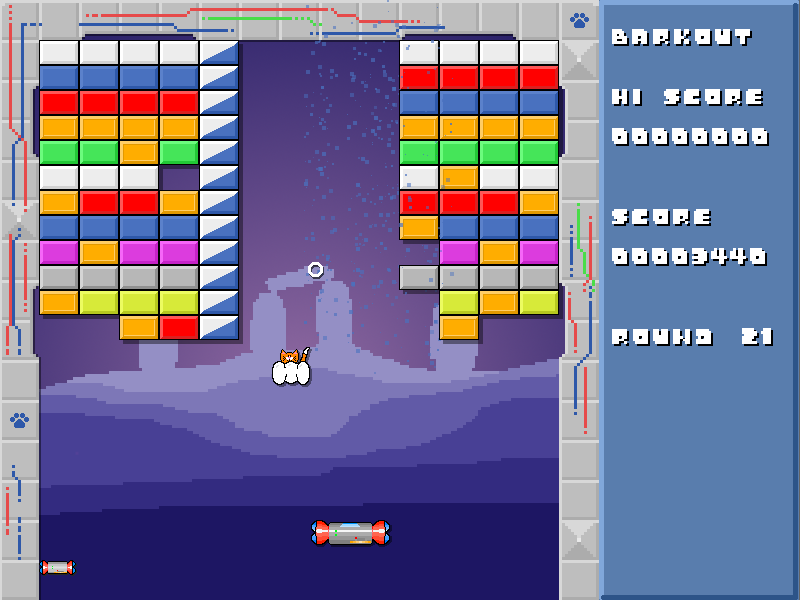Fat Horse Games
Gaming like it's 1989
Some text
Barkout is an Arkanoid (or if you're really old, Breakout) clone where you control a paddle at the bottom of the screen to deflect and control a ball to destroy bricks above you. When all those bricks that can be destroyed have been destroyed, you advance to the next level. Some bricks reveal powerups (or powerdowns) when destroyed and if the ball leaves the bottom of the play area, you lose a life.
Story
After the mothership was destroyed by the evil Cat Empire, only ace pilot Willow "Twiglet" Twiglington and her spacecraft, The Maus, survived, only to be trapped on the unforgiving surface of a hitherto unknown planet...
Frequently Asked Questions (that I've literally never been asked)
Latest
Version 1.2 is out now, with new features added since 1.1, including a new power up that splits the ball into three and a continue code that's given every four levels to enable play to continue from that point, similar to those continue features found in 80s and 90s console games.
About
This started life as a learning exercise to improve my C skills because someone close to me was starting a university course that included C programming, and I wanted to put myself in a better position to help if necessary.
It was also a chance to create the sort of game that I grew up playing, and to solve problems that had prevented me from finishing similar games when I was at university.
This is not the best Arkanoid clone you'll ever play (although neither is it the worst) and the source code should certainly not be looked on as the best way of doing things, but if you're so inclined you may still find it helpful.
The source can be downloaded at the bottom of the page from GitHub.
Why another Arkanoid clone?
Because it was the first type of game I tried (and failed) to program in Borland Turbo Pascal 7 many years ago at college. I kept hitting bugs that I couldn't solve and eventually gave up. Repeatedly.
Why is it called Barkout?
It's a pun on Breakout. It was supposed to be dog themed, but that ended up being restricted to the bone-shaped bonuses (bone-uses?) and the fact that enemies are cats. I was going to go with Barkanoid, but I thought that one-letter difference might be pushing copyright a little too much.
What language did you use?
C - with the SDL libraries for images, sounds, fonts and input.
Why C?
I have very little C experience and wanted to improve on that. With programming, the best way to learn is by doing, so I decided finally completing an Arkanoid clone in C would be a great learning exercise.
Who wrote the music?
I did. Good / terrible, isn't it? I used www.onlinesequencer.net to create all the music and sound effects in the game. Apart from the boss being hit or dying - that was me meowing into a microphone. For the music, I was trying to go with a similar feel to the original 8-bit music Arkanoid had on my Amstrad CPC. I think I've done OK in that respect.
And the graphics?
C'mon... even I can draw rectangles in GIMP.
What next?
A sequel, with all those things I didn't manage to get into this game. Different types of bricks, more exciting bonuses... plus the chance to write another piece of in-game music.
Download links (via github.com)
Help Hannah's Horse is a little arcade maze game in the Pacman mould, with a nod to the Codemasters Dizzy game Fast Food. The aim is to collect all the coins, as with Pacman, and also the carrots that are moving around the arena, as the various foods in Fast Food do.
Story
Hannah's horse, Harry, has been stolen and held to ransom! Collect the coins to pay off the horsenappers but avoid the evil ghosts who are out to stop you!
When all coins and carrots have been collected, Hannah moves onto the next maze and a step closer to retrieving Harry.
Hannah can collect power-ups to help her in her quest, but beware that some items can make her task more difficult.
About
Help Hannah's Horse started as a simple learning exercise using C++ and SDL 1.2 on Linux back in 2006 and a first version was released in 2009. In Summer of 2020 the project was resurrected and ported to SDL 2.0 to take advantage of features it offered, and later that year it was rewritten for Android in Lua using the excellent Solar2D framework but retaining the same graphics and musical assets as the desktop version.
The desktop version (C++ and SDL) is open source and can be downloaded at the bottom of this page.
Frequently Asked Questions (that I've just made up)
Why that name?
I knew a girl called Hannah. She had a horse. That's it.
What language did you use?
It's a close approximation to C++, although I'm sure it would make any real C++ developer wince.
Why C++?
It seemed a sensible choice for a game back in 2009 when I started it, and it can use the SDL libraries natively. To be honest, I didn't really know the difference between C and C++ back then, but it was probably the right choice as I had experience with Object Oriented Programming in Java at university. I'm not sure I'd choose C++ in the future as I find it an ugly and cumbersome language. I'll probably stick with C for the next game.
Who wrote the music?
I did. I admit it's not great. I used Rosegarden on Linux. The original music was shamefully stolen, so when I touched up the rough edges in 2020 I wrote some original music.
And the graphics?
Me again. These took me a long time to get right. The first iteration (which is probably around on the web somewhere) was very rough around the edges. I'm quite pleased with the current graphics.
